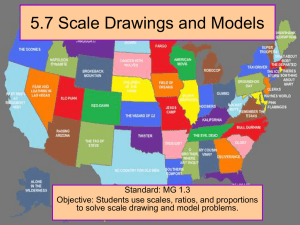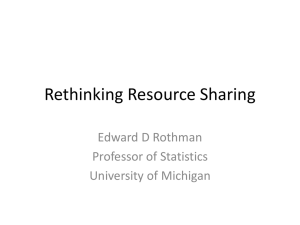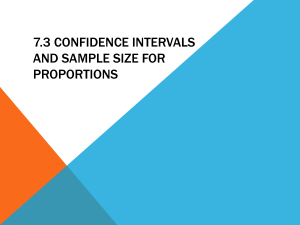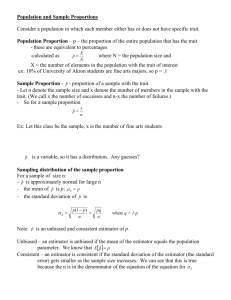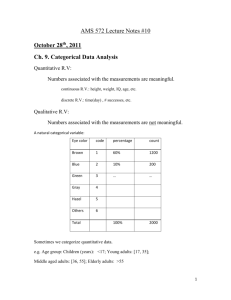Inference about a Population Proportion
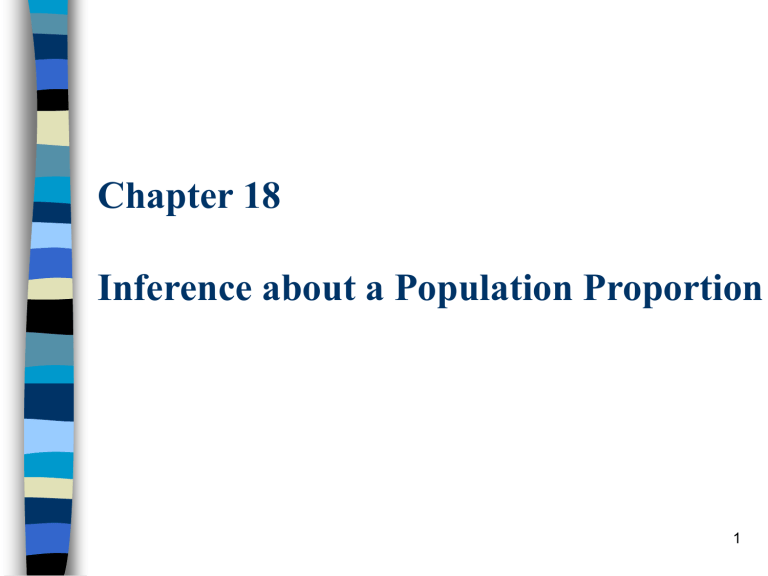
Chapter 18
Inference about a Population Proportion
1
Outline
The sample proportion
The sampling distribution of
Conditions for inference
Large-sample confidence intervals for a population proportion
Choosing the sample size
Significance tests for a proportion
2
1. The Sample proportion p
ˆ
The proportion of a population that has some outcome (“ success ”) is p .
The proportion of successes in a sample is measured by the sample proportion :
count of successes in the sample total count of observatio ns in the sample
“ phat”
3
2. The sampling distribution of p
ˆ
4
5
3. Conditions for inference
6
Standard Error of
Since the population proportion p is unknown, the standard deviation of the sample proportion will need to be
ˆ p .
s.d.
p(1 p)
s .
e .
n n
7
4. Large-sample confidence intervals for a population proportion
8
Examples
Example 18.4 Estimating risky behavior
(Page 476)
Example 18.5 Are the conditions met?
(Page 476)
Exercise 18.8 No confidence interval.
(Page 477)
9
5. Accurate C.I. for a proportion
Example 18.6 (P479) Shaq’s free shows
10
6. Choosing the sample size
The margin of error in our confidence interval is m
z *
( 1
) n
We may like to choose the sample size n to achieve a certain margin of error.
11
The sample size
12
Guess the sample proportion:
Since we don’t know prior to sampling, we will have to use a guess p* for . There are two ways to do this:
– Use a guess p* based on a pilot study or on past experience.
– Use p*=0.50 as the guess. This guess is conservative, as it gives a margin of error bigger than the true margin of error. (Conservative)
13
Example
Example 18.7 Planning a poll
(Page 482)
14
7. Significance tests for a proportion
15
Examples
Example 18.8 Is this coin fair?
(Page 484)
Example 18.9 Estimating the chance of head (Page 485)
16




